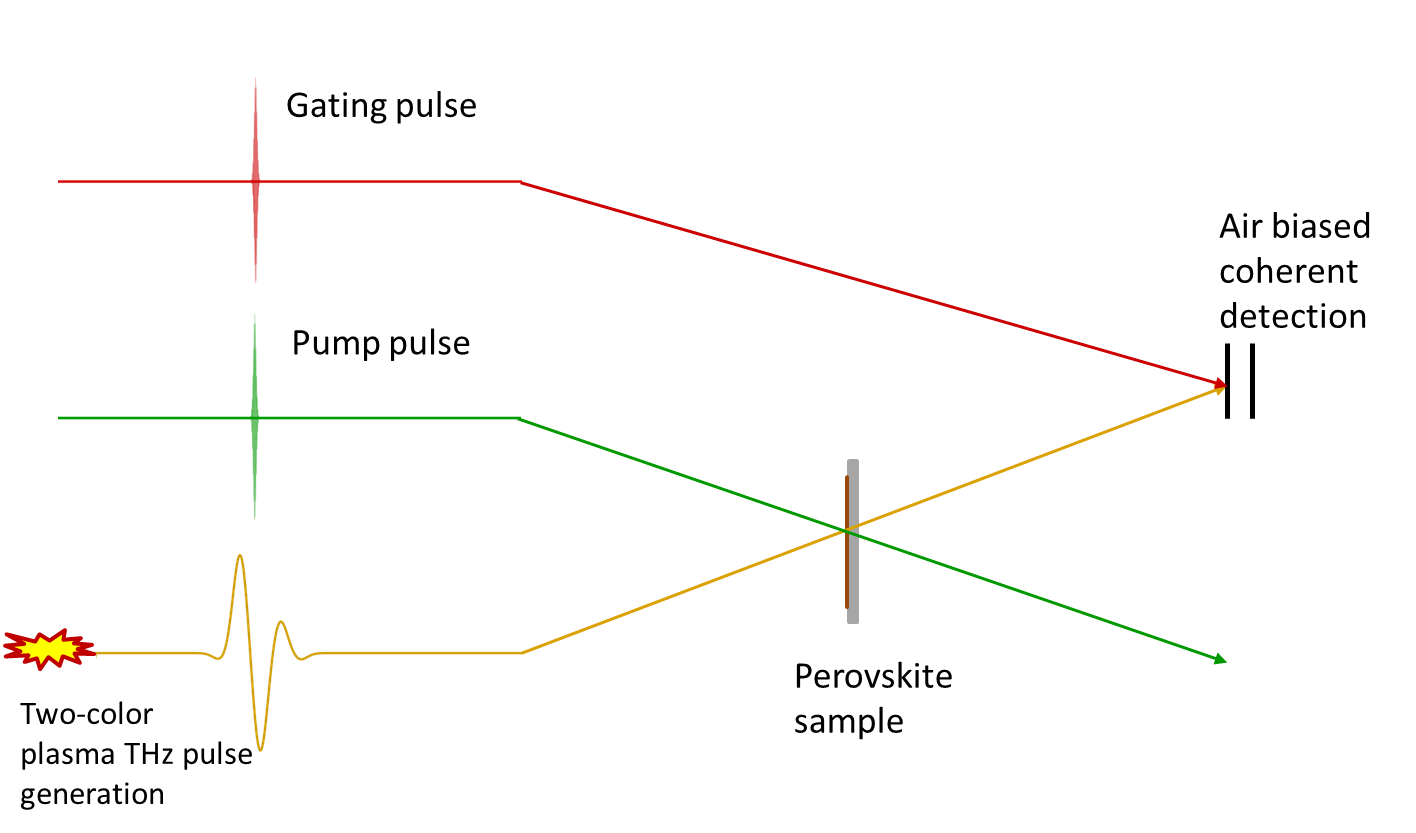Hybrid Organic-Inorganic Perovskites Studied with Ultra-Broadband Time-Resolved Terahertz Spectroscopy
The fundamental study of charge carrier dynamics has been shown to be central to the design of novel and improved photovoltaic systems. Understanding the mechanisms for charge carrier recombination, migration and transfer can pave the way forward for future developments. With this objective in mind, many spectroscopic techniques have been employed in the past. Particularly, THz time-resolved spectroscopy, based on optical rectification in non-linear crystals, has been used to study charge carrier and pseudo-particle dynamics in third generation photovoltaics, such as dye-sensitized solar cells[1] and perovskite solar cells [2].

A promising new technology based on gas photonics has been under heavy development for the last decade to obtain and detect broadband THz pulses [3], with early generation results dating back to the early 2000s. Improvements such as the introduction of the air biased coherent detection(ABCD) technique, and the use of different gas media [3] have greatly increased the signal to noise ratio. Thus, the technology has reached a state where optical pump-THz probe time-resolved spectroscopy can be successfully performed, providing enhanced time resolution and spectral bandwidth with respect to the classical optical rectification methods.
We present the first measurements carried out on multigrain methylammonium lead iodide perovskite thin films with optical pump-broadband THz probe spectroscopy. This technique allows us to unveil the first steps of charge carrier generation thanks to its sub-ps time resolution and extend the photoconductivity analysis up to a frequency of 20 THz.
[1] Brauer, J. C. et al., J. Phys. Chem. C, 2015,119, 26266–26274.
[2] Johnston, M. B. & Herz, L. M., Acc. Chem. Res., 2016, 49, 146–154.
[3] Lu, X. & Zhang, X.-C., Front. Optoelectron., 2014, 7, 121–155.